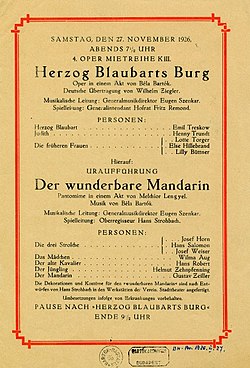Originally posted by silvestrione
View Post
Kate M. clearly shares your feeling, as she made a point of apologising to the radio 3 audience for even hinting obliquely at the idea of a young prostitute "kissing" the dying mandarin. I thought her nicety was presentist prudery and judgementalism; but if she does indeed reflect a broad-based sense of discomfort with magic-realist plots around sexuality, then perhaps she was justified in issuing her "trigger warning".
I suppose Bartok's tone, poised between black comedy and savage urban horror, is strong meat. But that for me is part of its appeal.




Comment